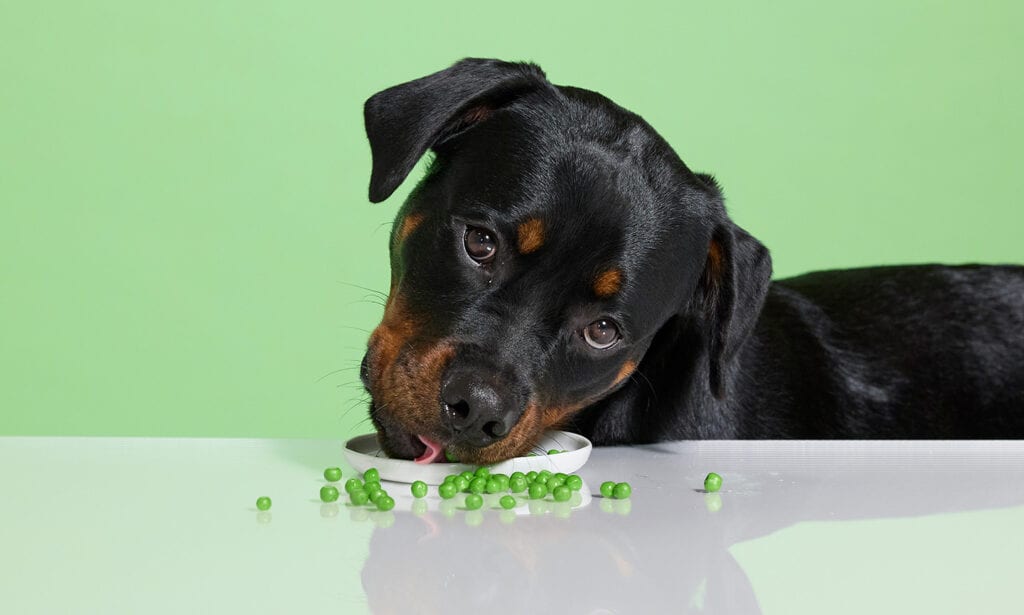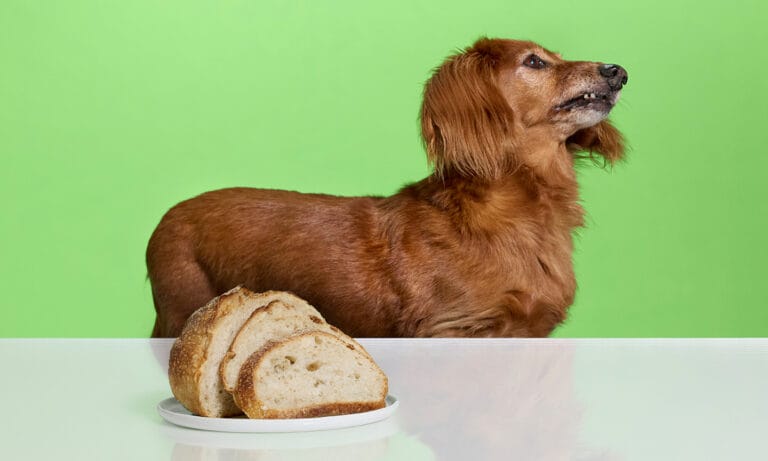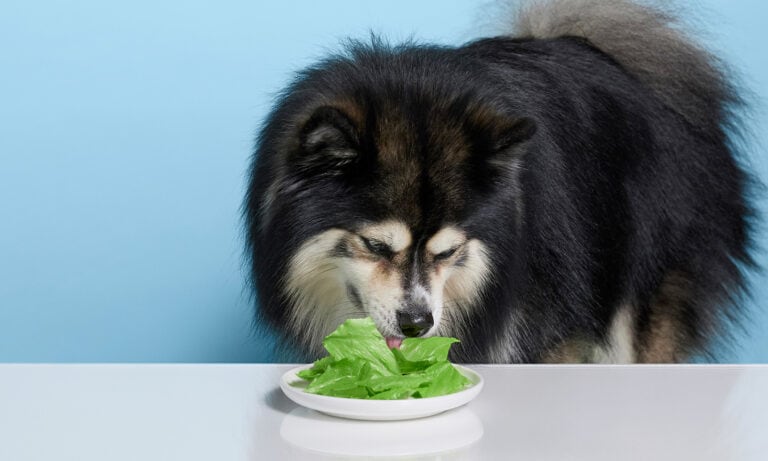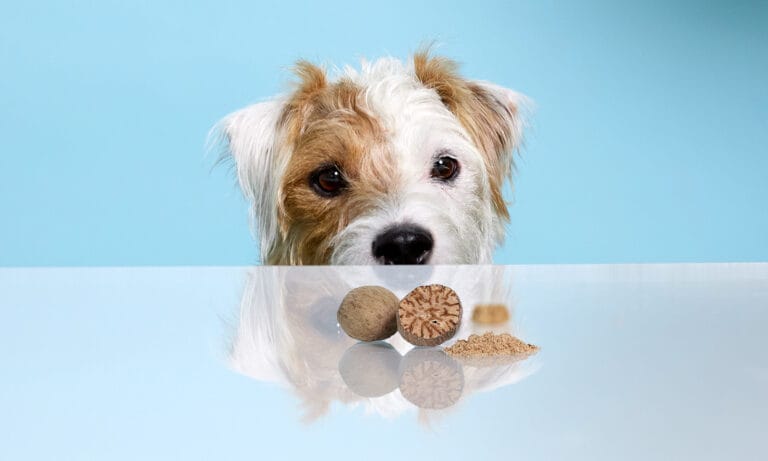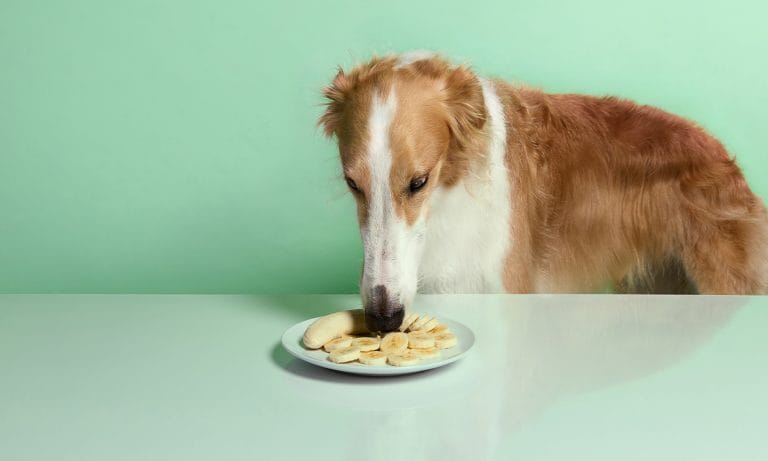Peas are a versatile, nutrient-packed veggie that can be used for many types of meals, like soups, pastas, and salads, or enjoyed on their own for us humans. But can dogs eat peas too?
If your pooch is pleading for peas, rest assured this green vegetable is safe for them to eat, as long as it’s fed in moderation and properly served.
We talked with veterinarians to learn more about the health benefits and risks of peas, which peas are safe to feed, and how to prepare them for your dog.
Always check with your veterinarian before introducing any new food into your dog’s diet.
In This Guide:
Are Peas Good for Dogs?
Peas are generally a good snack for dogs in moderation, says Wayne M. Johnson, VMD, veterinarian at Birdneck Animal Hospital in Virginia Beach, Virginia.
The benefits of peas for dogs include:
- Contain essential vitamins such as A, B, C, and K, and minerals like folate, iron, manganese, potassium, thiamin, and zinc
- Low in calories
- Good source of protein
- Rich in fiber
“Fiber in peas can help with digestion, and the vitamins support immune health and eye function,” Dr. Johnson says. “Just don’t rely on peas alone for these nutrients; they’re best as an occasional snack.”
These little legumes are an excellent option for weight management or as a light snack between meals due to their low-calorie content, adds Jessica Apted, DVM, regional medical director at Sploot Veterinary Care in Denver.
Are Peas Bad for Dogs?
Peas can be a delicious and nutritious food to treat your dog. However, there are a few risks to feeding peas to dogs.
- Upset stomach: Serving too many peas can cause digestive upset in some dogs, Dr. Apted says.
- Choking hazard: Small dogs can choke on whole peas, so it’s best to smash the peas before serving to them.
Symptoms to watch for when feeding peas to your dog include:
If you notice your dog is displaying these signs, it’s recommended to discontinue feeding peas and consult your vet.
What Kind of Peas Are Safe for Dogs?
While peas are undoubtedly nutritious, not all kinds are ideal for dogs to eat.
The types of peas that aren’t safe for dogs to eat include:
- Canned peas, due to often containing added salt and preservatives
- Unshelled pea pods, because they pose a choking risk and can be hard for dogs to digest
Peas that are safe for dogs include:
- Green peas (fresh and frozen)
- Chickpeas (cooked plain)
- Snap peas (cooked plain, with the tough, stringy parts removed)
- Snow peas
- Black-eyed peas (cooked plain)
“When selecting peas for your dog, green peas are the safest and most common option,” Dr. Apted says. “These peas are nutrient-packed, offering a great balance of fiber, vitamins, and minerals, and they’re easy on the digestive system when served in moderate amounts.”
If you’d like to share peas with your canine companion, the first step is to ask your veterinarian if the food is right for your pet—especially if your dog has any medical issues or eats prescription dog food.
Once you get the OK, peas should be cooked plain (meaning, they include no added salt, seasoning, or preservatives).
And remember to start small to see how your dog’s tummy handles them, Dr. Johnson says.
How To Safely Feed Peas to Your Dog
Want to add a little nutrient boost to your doggy’s diet? Dr. Apted shares tips on how to prepare peas for your dog, including:
- Serve plain. Some seasonings like onion and garlic are toxic to dogs; and some oils can cause an upset stomach in dogs.
- Smash ’em. Or cut into small pieces. Avoid giving whole peas to very small dogs, as they might be a choking hazard.
- Lightly steam ’em. This preparation allows for easier digestion.
And voilà—a sweet and savory snack!
How Many Peas Can I Give My Dog?
As healthy as peas are, it’s best to feed them only in moderation to prevent unwanted weight gain and potential adverse reactions. A good rule to follow is to limit treats to 10% or less of your dog’s daily calories.
“Limit servings to once or twice a week, as too many peas can be hard on a dog’s digestive system,” Dr. Apted says.
Dr. Apted shares a general feeding guideline of how many peas to give your dog based on their size and weight. Serving sizes will also vary based on the size and variety of the pea.
Because of this, it’s always best to consult your vet, who can give you an appropriate serving size for your pet.
Extra-small dogs (2–10 pounds)
1–2 peas
Small dogs (11–20 pounds)
3–5 peas
Medium dogs (21–50 pounds)
Up to 10 peas
Large dogs (51–90 pounds)
10–15 peas
Extra-large dogs (91+ pounds)
15–20 peas
FAQs About Peas for Dogs
Q:Can dogs eat pea pods?
A:No, pea pods are not safe for dogs to eat, because they are a choking hazard.
Q:Can dogs eat sugar snap peas?
A:Yes, dogs can eat sugar snap peas. Give in small amounts to prevent potential digestive upset.
Q:Are green peas good for dogs?
A:Yes, green peas are good for dogs as long as they’re fresh or frozen, plain (meaning no salt, seasonings, or spices), and fed in moderation. Avoid canned green peas, because they contain added salt.
Q:Can dogs eat black-eyed peas?
A:Yes, dogs can eat black-eyed peas in moderation as long as they’re cooked and free of other ingredients, including salt, seasoning, and spices.
MORE VEGGIES DOGS CAN EAT:
Share:
